November 2007
The Jaarbeurs in Utrecht hosts an international collectors
fair twice a year. Somehow we always come home with good finds. This
year's spring edition already brought us a Deck of the Month in April and now the fall
edition has done the same. And it even wasn't our best find! That was the
"Bloemen Kwartet" ("Flowers" quartet game), that was printed
in chromolithography by the Speelkaartenfabriek Nederland from Amsterdam in 1923
. We had been looking for that game for almost 10 years and now -on the first
day of the fair- we could finally
add it to our SN collection. Too bad, that this site is about playing cards and
not about quartet games. So a "best find" doesn't automatically
qualify as "best deck".
|
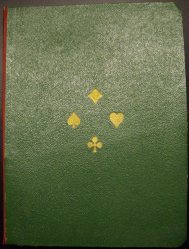
|
But when a
befriended collector handed us this large carton box on the second day,
we were pleasantly surprised. It contained two identical decks that are
probably just as hard to find as the SN quartet game.
The box
has 4 carton compartments: 2 for the decks, one for scorecards and one
for additional papers. The way in which the box is made reflects the
hand of a small manufacturer in an era of thriftiness. |
|
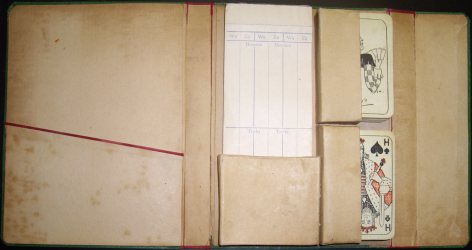
|
We only knew the deck from a picture in a Dutch book about
private or small printers editions in the Netherlands that was published by
Jelle Sietsma and Willem Hogenes in 1988. The makers date the deck as ca. 1946, which
seems consistent with "poor" looks of the box.
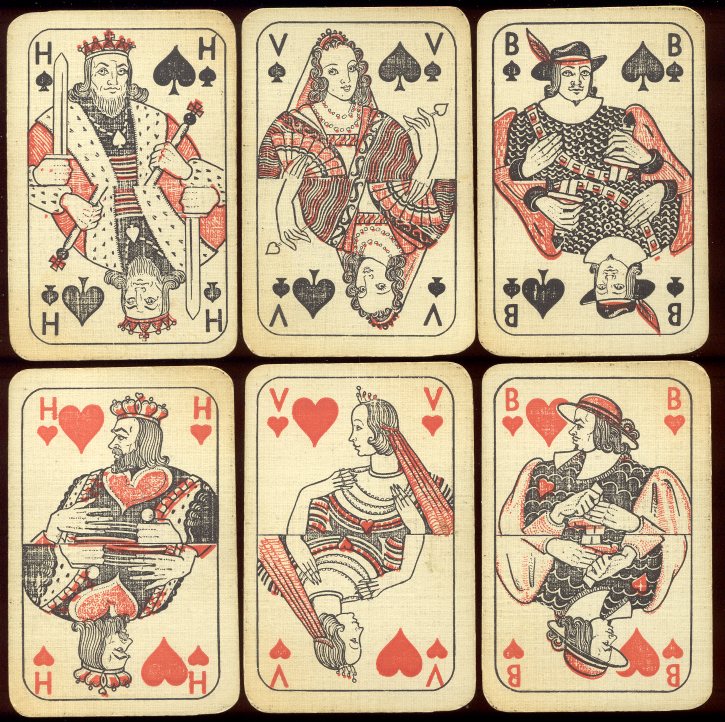
The deck consists
of 52 cards and a joker. The joker is signed G.W. and those are probably the
initials of the designer of the deck. There are only 2 colors -red and black-
used for the front of the cards. The backdesign was printed in red or blue. The
aces are plain and the indices are Dutch. The deck is printed in offset.

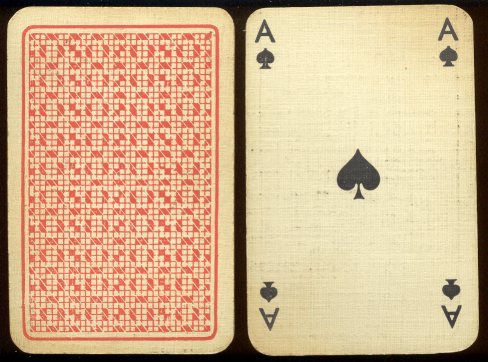
The design of the
courts is non-standard, yet with a classic look. In each suit the faces of the
courts are positioned in the same direction. They either all look to the right
(clubs) or to the left (hearts) or face the beholder. Each of the courts holds a
suitsign or their garments or arms are embellished with them. The design of the
courts shows a black border that is not repeated on any of the numbercards.
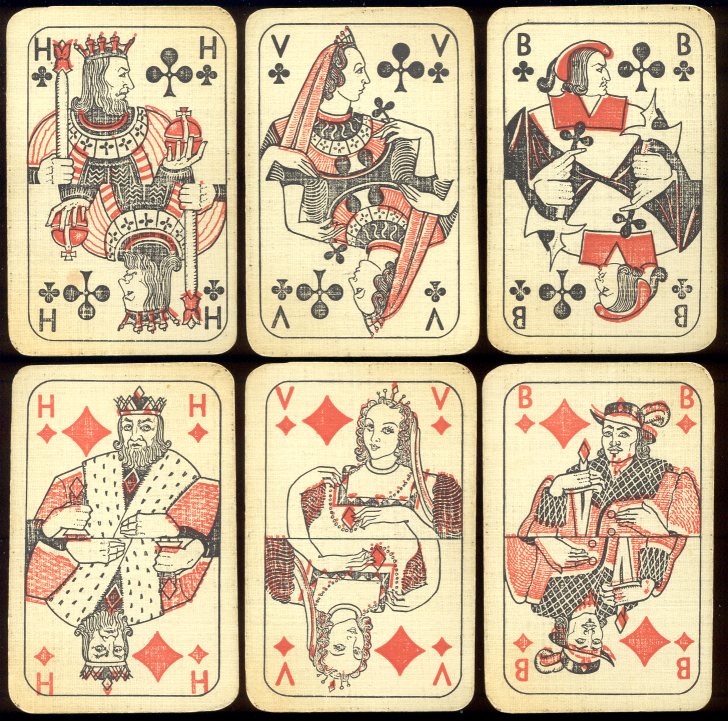
The manufacturer
of these cards is unknown, but it's almost certainly a small printing firm, not
experienced in the making of playing cards. The cards are cut in an irregular
way, just like the corners. But that amateurism is often the charm of these
small editions. There's no indication about the number of copies that was made,
but as the deck is hardly ever seen, it can't have been published in large
numbers.
BACK TO PRESENT MONTH





